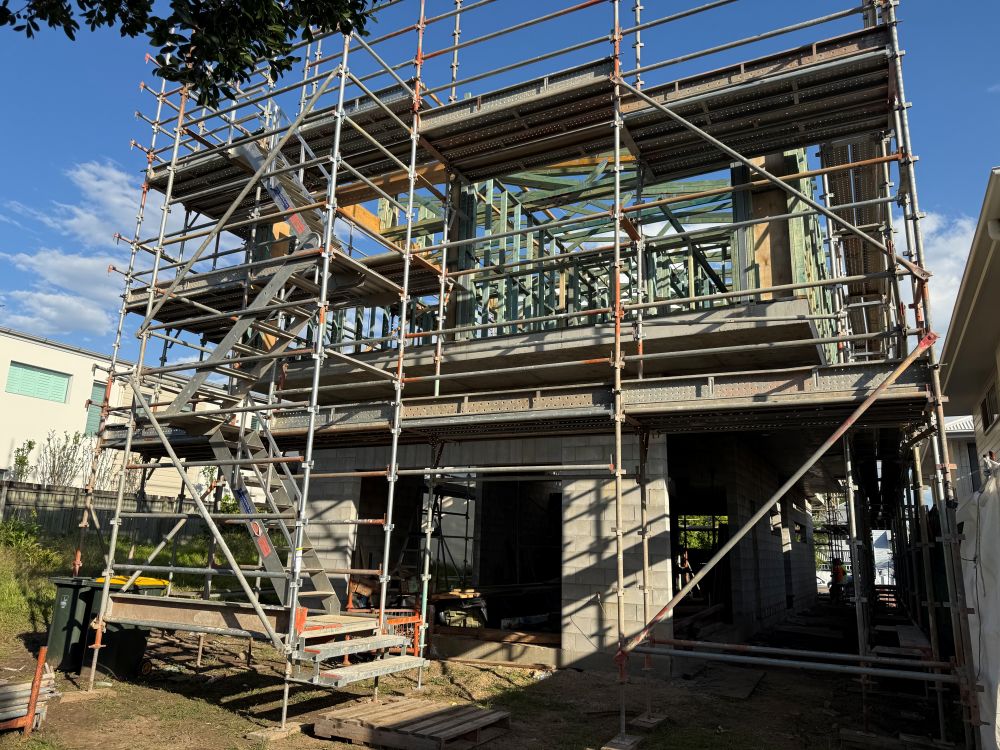Maximizing Scaffold Load Capacity: Key Considerations for Safety and Compliance in Construction Projects
Scaffold load capacity represents a critical aspect of construction safety, as it defines the maximum weight that a scaffold can support during various tasks. Properly understanding this vital concept requires thorough analysis of three key categories of loads that must be carefully assessed:
- The weight of the scaffold structure, commonly referred to as the dead load, which includes the inherent mass of the scaffold itself.
- The weight of personnel, tools, and materials positioned on the scaffold, known as the live load, which fluctuates based on the number of workers and equipment involved.
- External environmental forces, such as wind, rain, and vibrations, categorized as environmental loads, which can greatly impact the stability of the scaffold.
Understanding these load categories is essential, as they directly influence the total stress that a scaffold experiences throughout its operational lifespan. Compliance with these load calculations is not just recommended; it is legally mandated by Australian law to ensure the safety of everyone involved in construction activities.

Harnessing Our Scaffold Load and Height Calculator: A Detailed Step-by-Step Guide
While it is important to note that no universal formula exists to cover every scaffold configuration, our scaffold load calculator offers a simple and efficient means of obtaining accurate load estimates by clarifying the key variables involved. This invaluable resource is specifically tailored for residential builders, homeowners, and scaffold hire professionals who operate under the guidelines set forth by Australian OHS standards.
Step 1: Identify the Type of Work
Start by determining the specific nature of the task at hand, which could include activities like roof restoration, exterior painting, solar panel installation, cladding, or rendering. Each of these tasks requires distinct scaffolding considerations to ensure safety and efficiency.
Step 2: Specify the Worker Count
For example, you may need to enter the number of workers involved in the task, such as two individuals who will be working simultaneously on the scaffold platform, to accurately calculate the load requirements needed for safety.
Step 3: Estimate Material Weight
This could involve estimating the total weight of around 120 kg of rendering materials or tools that will be utilized throughout the project, ensuring that the load calculations are comprehensive and precise.
Step 4: Input the Height of the Scaffold Platform
For instance, you may set the scaffold platform height at 4.5 metres above the ground, which is crucial for ensuring compliance with safety standards and regulations.
Upon entering this information, the calculator will generate a recommended scaffold configuration that includes:
- The suitable duty class (for instance, Light, Medium, or Heavy) tailored to the specific needs of your project.
- An estimation of the Safe Working Load (SWL) per bay, ensuring compliance with required safety standards.
- The recommended scaffold type (for example, aluminium tower or steel frame) based on the specifications of the project.
- Necessary safety features (such as guardrails, soleplates, and stabilisers) to enhance overall site safety.
- Compliance requirements related to height (e.g., tie-offs mandated for platforms exceeding 4 metres).
Exploring the Reasons Behind the Lack of a Universal Load Formula for Scaffolding Applications
While our scaffold calculator is a practical tool for generating load estimates, scaffolders and engineers do not rely solely on a single formula due to several reasons that warrant consideration:
- Scaffold systems can vary significantly based on their material composition and design, including options such as aluminium, steel, modular, and tube-and-coupler systems, each possessing unique characteristics and strengths.
- The intended use of the scaffold has a substantial impact on its load capacity, as different activities require varying levels of strength (for instance, painting versus masonry work).
- Manufacturers provide differing platform strength and component ratings, leading to variations in calculated load capacities that must be taken into account.
Industry Standard Methodology for Accurately Calculating Safe Working Load (SWL)
Professionals in the field commonly utilize the following formula as a foundational reference for estimating scaffold load capacities:
Safe Working Load (SWL) per bay = (Platform Load Rating × Safety Factor) – Scaffold Component Weight
Illustrative Example:
- A platform rated for a maximum load of 600 kg
- Applying a 4:1 safety margin: utilizing only 25% of the rating provides a usable load of 150 kg
- Subtracting the weight of the scaffold structure, calculated at 100 kg
- The resulting usable working load is 50 kg, which offers a conservative estimate that typically does not reflect actual planning practices.
Given the complexities associated with real-world conditions, experienced scaffolders generally refer to manufacturer guidelines, engineering tables, and local building codes rather than relying solely on this simplified formula.

Implementing Best Practices During Scaffold Evaluations for Optimal Safety
Professional scaffold evaluations typically include the following essential components to ensure safety and compliance:
- Thoroughly reviewing manufacturer load data and verified span ratings for accuracy, ensuring all specifications meet safety requirements.
- Calculating the total live, dead, and environmental loads to guarantee a secure working environment throughout the project.
- Ensuring compliance with AS/NZS duty class specifications to adhere to the latest industry standards and regulations.
- Obtaining engineering sign-off for any custom or elevated scaffold configurations that may deviate from standard practices to ensure safety.
- Conducting comprehensive visual and structural inspections prior to scaffold use to proactively identify potential hazards and risks.
Tailoring Scaffold Practices to Adapt to Environmental Conditions and Site-Specific Factors
Addressing Wind Exposure in Coastal Queensland
In regions classified under wind zones N3 and N4, the lateral forces acting on scaffolds are significantly increased. As a result, scaffolds must be secured at closer intervals, and additional bracing or shade cloth may be required, particularly during periods of high winds, to maintain stability and ensure safety.
Factors Related to Soil and Ground Conditions
When encountering unstable or sloped soil conditions, it is essential to utilize soleplates and adjustable base jacks to enhance the stability of the scaffold. Additionally, sites with varying elevations may necessitate the implementation of levelled bay systems to ensure a consistently safe working environment.
Regulatory Requirements for Work Above Four Metres
In Queensland, any platform surpassing four metres in height necessitates thorough inspection and certification. A scaffold handover certificate is mandated under the Work Health and Safety Regulation 2011, ensuring adherence to safety standards and regulations at all times.
Crucial Safety Regulations That Must Be Adhered To
- Work Health and Safety Regulation 2011 (QLD) outlines essential safety requirements for construction sites.
- Managing the Risk of Falls at Workplaces (Code of Practice, 2021) provides comprehensive guidelines for fall prevention strategies.
- AS/NZS 1576 and AS/NZS 4576 Standards are critical for scaffold safety compliance and best practices.
- High Risk Work Licence (HRWL) is required for any scaffold setups exceeding four metres in height, ensuring that qualified personnel manage the scaffold.
Site supervisors hold the responsibility for conducting regular inspections, particularly after adverse weather conditions or any significant changes to scaffold height or load, to ensure continuous compliance with safety regulations.
In-Depth Case Study: Successful Scaffold Application in Robina
In a recent construction project situated in Gold Coast, a homeowner in Robina required scaffolding to repaint and render a two-storey exterior wall. The working height for this task was determined to be five metres, with two tradespeople utilizing approximately 200 kg of rendering materials and tools throughout the project.
Using our scaffold calculator, the proposed configuration included the following recommendations:
- Scaffold class: Medium Duty, identified as suitable for the task at hand.
- System type: Steel frame featuring timber planks for enhanced durability and stability during the project.
- Additional safety measures: Incorporating full edge protection, utilizing soleplates for soft earth conditions, and adding wind mesh to reduce exposure to wind hazards.
The scaffold met all required inspections and complied with Queensland’s OHS regulations, resulting in uninterrupted workflow throughout the project, underscoring the effectiveness of diligent planning and adherence to safety protocols.
Critical Considerations for Scaffold Height and Load Capacity Calculations
Determining scaffold height and load capacity must be approached with meticulous attention to detail and never as mere guesswork. In residential projects, this careful process is crucial for ensuring safety, managing costs effectively, and achieving compliance with local regulations.
Given the specific requirements applicable to Australian conditions, especially in southeast Queensland, we highly recommend obtaining an accurate scaffolding quote and ensuring that all installations are conducted by qualified professionals.
Contact CanDo Scaffolding Hire for Expert Guidance and Comprehensive Services
For further information regarding our services, please feel free to reach out to us at 1300 226 336 or email us at [email protected] at your convenience.
We provide an extensive range of scaffolding solutions, including void protection platforms and roof edge protection, tailored to meet the specific needs of any residential or light commercial construction project.
Understanding Scaffold Load Capacity for Residential Projects
The Article: Scaffold Load Capacity Insights for Residential Projects first appeared on https://writebuff.com
The Article Scaffold Load Capacity for Residential Construction Projects Was Found On https://limitsofstrategy.com
The Article Scaffold Load Capacity in Residential Construction Projects First Appeared ON
: https://ad4sc.com


The discussion around scaffold load capacity is tremendously important, especially when we consider the implications of safety and compliance in construction environments. Your breakdown of the different load categories—dead load, live load, and environmental loads—provides a solid foundation for understanding how crucial these factors are in real-world scenarios.
You’ve highlighted essential points regarding scaffold load capacity, particularly the distinction between dead loads, live loads, and environmental forces. However, it’s interesting to consider how often these factors are overlooked in the hustle of project timelines. For instance, I’ve seen scenarios where project managers prioritize speed over safety, leading to inadequate assessments of environmental loads, especially in unpredictable weather conditions.